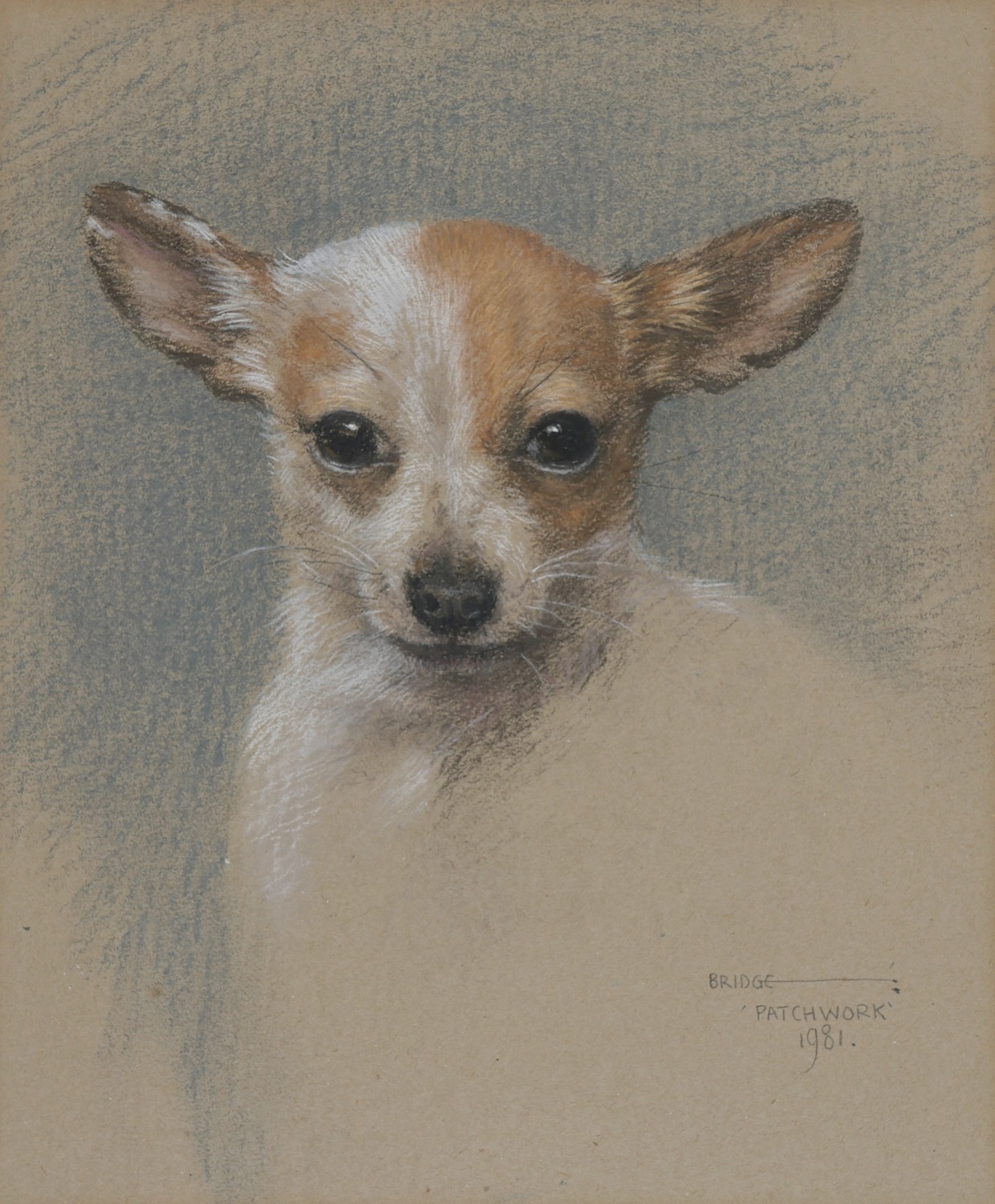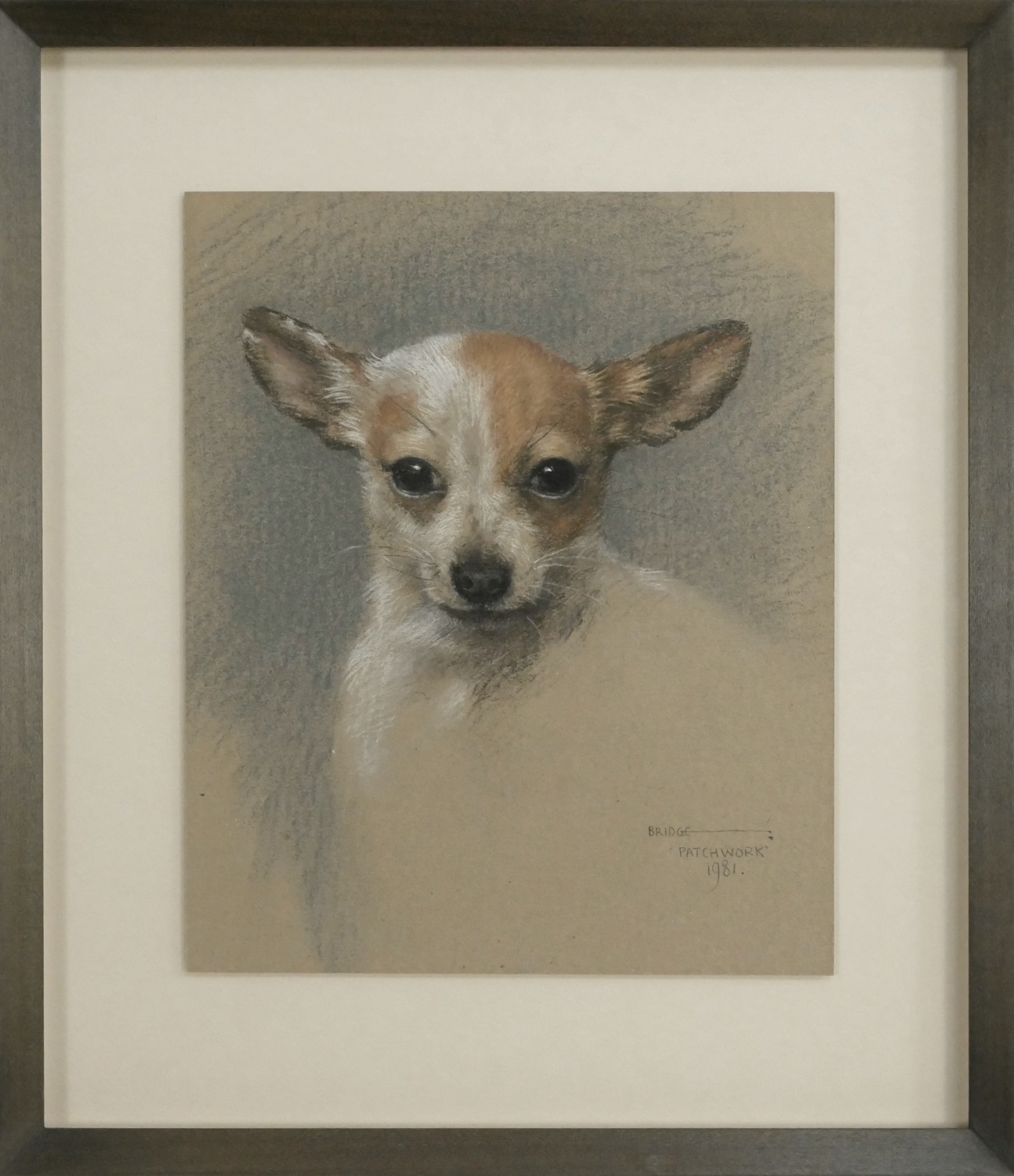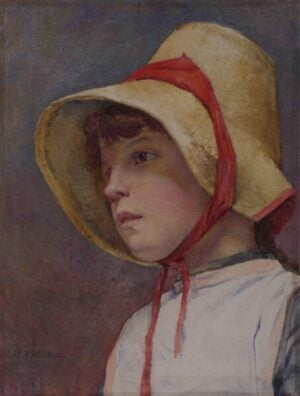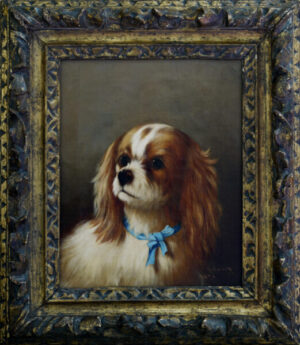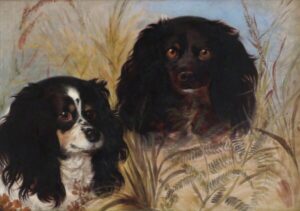Brand
Bridge, Elizabeth (1912-1996)
Elizabeth Bridge was born in Golders Green, Middlesex on 30th July 1912 to William and Clara Bridge (née Dewdney), the eldest of four children and the only daughter. Her father, William Alfred Bridge was an accomplished cellist and the brother of renowned composer Frank Bridge. Her mother, Clara, was a contralto singer who, prior to her marriage to William, had performed professionally. According to a local newspaper article of the time, she and William were both soloists in a concert at the Dome, Brighton, in 1906. They were married in Steyning, East Sussex in 1911.
Despite her musical heritage, the young Elizabeth was more taken with painting: ‘For my third birthday, my mother gave me a box of watercolours. That was the start of my love affair with painting’ (Angela Raby, 1999, unpaginated). This love of painting endured throughout her childhood and her education at Hendon County School, and, in 1928, at the age of 17, she won a scholarship to Hornsey School of Art. During her three years of study, she became devoted to painting and determined to earn her living through her art.
Upon her graduation in 1931, the Head of the school wrote an introductory letter to the artist, Joseph ‘Jossie’ Greenup, highly recommending Elizabeth. This instigated a lifelong friendship with the Greenup family and particularly with Jossie’s wife, May. Later the same year, Elizabeth began to work in his studio, modelling for his nude paintings and sitting for his celebrated portrait Distant Horizons. At the time, Jossie was commissioned to produce illustrations for Pearson’s Magazine, which Elizabeth assisted with as well as painting. She is also recorded as being a freelance painter during this period.
In 1939, when the war broke out, Elizabeth joined the London Auxiliary Fire Service as a full-time auxiliary. She was based at the West End and Hampstead stations and served throughout the war, painting when her shifts of 48 hours on and 24 hours off allowed. She focused on her flower studies, developing her sensitive style and soft palette, and beginning to sell them through Mr Dingley’s Gallery in Golders Green. She was left bereft when two of her younger brothers, Basil and John, were tragically killed whilst serving in the RAF. Her youngest brother Richard, was still at school in 1939, when the war began.
In 1946, Jossie Greenup died of pleurisy. He left an unfinished portrait of Pauline Harrison, an authority on the Middle East, which he asked Elizabeth to complete. He also left a large debt, and May was forced to sell the studio. She and Elizabeth subsequently moved out of London, and so began a companionship that was to last until Elizabeth’s death in 1996. They moved first to Charlbury, Oxfordshire, where they rented rooms; then the following year, they bought a large house overlooking the village of Bourton-on-the-Hill in the Cotswolds, which they converted to incorporate a studio space.
Elizabeth first exhibited at the Royal Academy in 1947 with a painting entitled Winter Sweet. She made regular trips to London and, in 1948, had her first solo show at the Foyles Gallery. Her flower paintings had become an increasing commercial success since the late 1930's when Valentines of Dundee used them on their greetings cards and four members of the Royal Family chose them at Christmas. Her successes continued when she was elected to the Royal Institute of Painters in Watercolour in 1950 and later the Royal Institute of Oil Painters. In a short autobiographical note written in 1970, Elizabeth listed the prestigious institutions at which she had exhibited, revealing the versatility of her talent: ‘Royal Scottish Academy, Paris Salon [where she received an honourable mention], Society of Women Artists, United Society of Artists, National Society of Artists and Industrial Painter’s Group etc.’ She continued to exhibit at the RA until 1966, seeing a total of eight of her paintings being shown in the intervening years between then and 1948.
In 1952, Elizabeth and May moved to Bourton-on-the-Hill where they purchased a cottage and converted its outbuildings into studio spaces. Elizabeth encouraged May to paint and her small oils of flowers from their garden were sold in John Lewis and Heals, although Elizabeth felt frustrated that they were appreciated as furnishings and not as art. During their happy years in the Cotswolds, Elizabeth’s devotion to painting continued uninterrupted and May set up a pottery school. Whilst living in Bourton-on-the-Hill they nursed both May’s sister Kathleen and Elizabeth’s mother in their final illnesses and by the late 1960's were keen to move away from the sad memories of the cottage.
They moved to Wales in 1968, purchasing an old schoolhouse in Cardiganshire, and once again undertook an ambitious renovation project transforming the building so that it combined studios and a gallery space as well as a new home. The move to Wales inspired a new period of work for Elizabeth as the landscape made a great impression on her and her work. She produced a series of paintings of nearby quarry works. Thick with impasto, they depict shadowy mounds of earth touched by an eerie brilliance, and suggest a remarkable turn from the gentle beauty of her flower paintings. However, paintings such as Firefighters – likely painted during the war – and Eden in the Suburbs – exhibited at the RA in 1964–suggest her landscapes always possessed an impressive profundity.
Landscape was known to be her preferred subject and this passion is evident in her work. A newspaper article from 1968 celebrating Elizabeth and May’s efforts in turning an Ancient School House into a ‘Studio-Home’ stated that: ‘The favourite subjects for her landscape painting are old quarries. Only once after an illness, did she try to do abstract painting.’ She is quoted as having said: ‘But I soon went back to realism, which I prefer. A true abstract artist must give the person looking at his work the scope for imagination. I think abstracts are expendable and limited in their appeal’ (Western Telegraph, Thursday 4 July 4 1968). In the same article her collage work is also described as ‘fascinating’, further reinforcing the sense of her versatility as an artist.
Elizabeth and May spent seven productive years in Wales where Elizabeth exhibited at the Royal National Eisteddfod and expanded her landscape repertoire, but they returned to the Cotswolds in the early 1970's. She continued to paint until her last illness, in 1996 she died peacefully at home in Broadway, at the age of 84. Elizabeth’s ashes were scattered by May at the source of the River Windrush, which flowed through the Cotswold Hills and into London tracing back the trajectory of their happy lives together.
After her death, for unknown reasons, all records of Elizabeth’s expansive sixty-year career were destroyed. This biography owes much to Angela Raby’s The Forgotten Service and her biographical notes on May and Jossie Greenup as well as Elizabeth. As Greenup’s niece, Angela Raby wrote of the pair: ‘May and Elizabeth lived together from 1946 until 1996. Their friendship from the early thirties until Elizabeth’s death was enduring. May requested that Elizabeth’s story was told alongside her own.’ In 1997, a large group of her paintings were sold at auction, many of their whereabouts remain unknown.
Further Reading:
Angela Raby, ‘The Forgotten Service: Auxiliary Ambulance Station 39 (After the Battle)’, privately published, 1999
Angela Raby, ‘Biographical Notes on Joseph ‘Jossie’ Greenup, May Greenup and Elizabeth Bridge’, 1999 (Held in The Women’s Library, London School of Economics)
